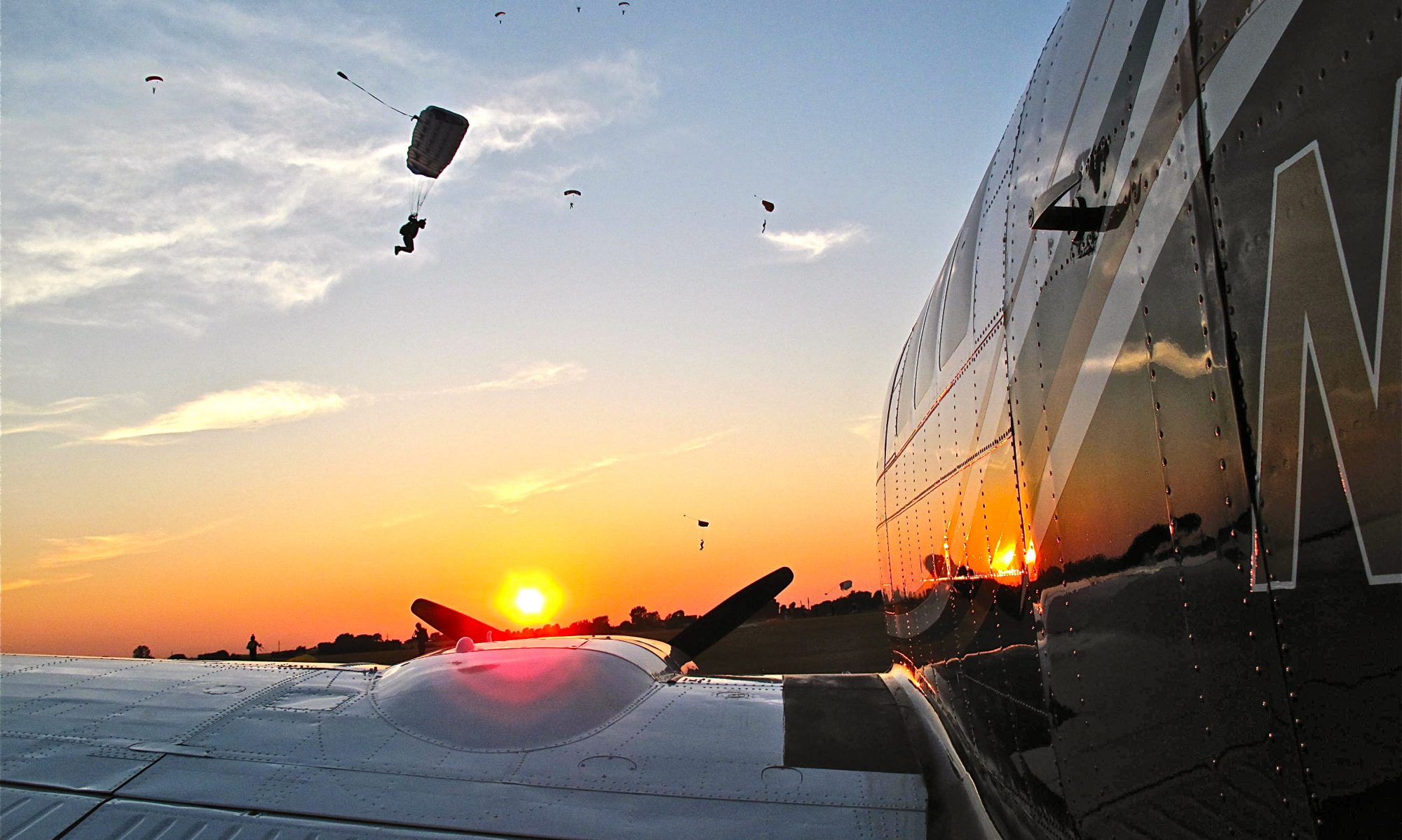AHHH, Thank You, Thank You Verry Much
I have a few side jobs that I do to make a little extra money now and then, start revolutions, overthrow governments, deflower virgins, rescue damsels, after putting them in distress of course and flying small planes around the world. You know, the usual stuff. One of my all time favorite jobs is being a member of the Flying Elvi skydiving demonstration team. What the heck is a Flying Elvi you ask? Why it’s a bunch of old guys dressed up as the King of Rock and Roll jumping out of an airplane, crashing into a parking lot at some random Indian casino and then putting on a super awesome lip-sync show. That’s what a Flying Elvi is. Stand by for the video.
I Double Dog Dare You!
First ‘hurricane hunter’ flight was made on a bet
FORT LAUDERDALE, Fla. — The first hurricane hunter flight 70 years ago this week was made on a bet — that the plane flying into the eye of a storm would be ripped apart in violent winds.
And all the daredevil pilot stood to win was a highball whiskey cocktail. He also faced a reprimand from senior officers.
Determined to prove a point, Army Air Corps Lt. Col. Joseph Duckworth ignored the perils and aimed the small AT-6 “Texan” trainer into a storm about to hit Galveston, Texas, on July 27, 1943. His navigator, Lt. Ralph O’Hair, would later describe the flight as “being tossed about like a stick in a dog’s mouth.” […]
 The AT-6 Texan was used as a trainer during and after World War II. In 1943 to counteract joking by Allied pilots at an instrument flying school that the trainer was “frail,” Col. Joseph Duckworth flew into a Category I hurricane to prove its worth.
The AT-6 Texan was used as a trainer during and after World War II. In 1943 to counteract joking by Allied pilots at an instrument flying school that the trainer was “frail,” Col. Joseph Duckworth flew into a Category I hurricane to prove its worth.
Your Weekly Lex, For Strength
By lex, on January 19th, 2008
This morning, as I might have mentioned, was much taken up with the attempt to fashion a perfect spreadsheet to capture several thousand flight hours, landings and and instrument approaches. Dreary work up front made filling in the blanks a little less tedious on the back end. But I started at around 0645 this morning and by 1500 – having worked through lunch without realizing it – I was only up to April, 1985.
This is going to take a little while.
Log books contain a great deal of data, and when it comes to manipulating data there is nothing to improve upon automated systems. I have signed to “Certify a Correct Record” whatever it was Yeoman Apprentice Wishes E. Were-Ellswear calculated more often than I should have done. It appears that “error carried forward” did not entirely vanish upon graduation from college.
But there’s something about a physical logbook, sitting on your desk. You will have so many times looked at it over the course of a career. Scrutinizing its pages as though they contained some hidden mystery – legends of experience, competence, potential. You will have watched it grow with a quiet but increasing pride. Watch it spill over from first one book, to two. Eventually four for me, three of them wrapped in a naugahide binder, my last one loose. Plus the civilian log book, but I’ve barely scratched the surface of that one.
Twenty-odd years. Over four thousand hours. Black ink for day flights, red ink for night. Green for combat. […]
Gravity Check
Steady…..Steady…..
A good pilot/skydiver friend of mine, who I’ll call Geno because that’s his name, OK nickname but let’s not split hairs, had a scary story about one night one the flight deck of a destroyer many years ago. That particular dark and stormy night somewhere in the south Pacific Geno had flight deck duty when the call came in that a helicopter was coming in to land. Geno ran up to the landing platform and was knew right away that that recovery was going to be hairy. Geno’s job that night was to dash under the helicopter as soon as it touched down and attach a tie down chain to one of the landing gear mounts, or something. The deck was pitching and rolling violently and the pilot was having a difficult time but eventually managed to slam the helicopter onto the deck. As soon as the wheels made contact Geno dove under the belly of the helicopter and successfully secured his chain. As he was rolling out from under the helicopter the deck rolled hard and the helicopter came off the deck because the sailor on the the other side hadn’t yet secured his tie down chain. Now I’m sure you you can imagine how well a helicopter flies with one of it’s wheels tied to a pitching flight deck but I’m pretty sure you can’t imagine how scary it would be to be lying on your back on that landing platform watching the show and wondering just what part of the helicopter is going to hit you when it crashes. As the pilot tried desperately to control his aircraft Geno rolled back under the wildly swinging helicopter and against SOP hit the quick release on the chain setting it free. As the helicopter shot into the air it’s tail wheel took out part of some sort of railing off to one side of the landing platform and flew away with it dangling from it’s tail. Geno told me that when the helicopter came back for another attempt at landing the mood on he landing platform was just a little bit tense.
Ferry Flight Pic Of The Day
More Oops
The real story about the B-17 “Liberty Belle” Accident








